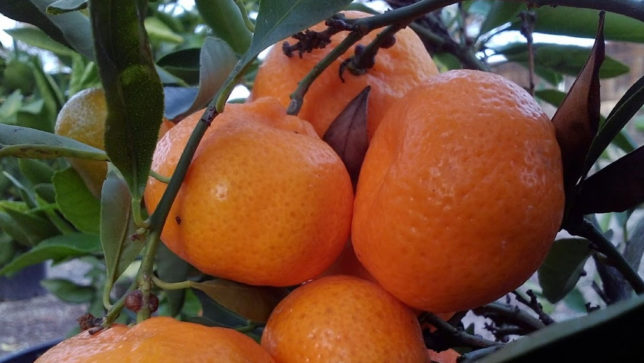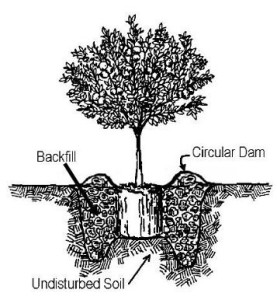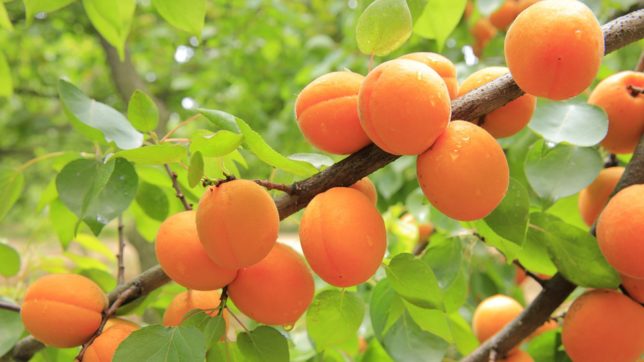
Plan backyard orchards for variety and prolonged harvests
For years, most of the information about growing fruit came from commercial orchards that advocated methods promoting maximum size for maximum yield but required 12-foot ladders for pruning, thinning and picking, and 400 to 600 square feet of land per tree. Tree spacing had to allow for tractors and heavy automated equipment. Homeowners today do not need or expect commercial results from their backyard fruit trees. A commercial grower would never consider using his commercial methods in a residential backyard, and neither should a homeowner.
Prolonged Harvest of Tree-ripe Fruit From a Small Space
Backyard orchard culture means planting close together several or many fruit varieties which ripen at different times and keeping the trees small by summer pruning. Homeowners today have less space for fruit trees, less time to take care of them, and less time to process or preserve large crops than in the past. Plan today’s backyard orchards with different objectives in mind.
High-Density Planting and Successive Ripening
Maximizing the length of the fruit season means planting several (or many) fruit varieties with different ripening times. Because of the limited space available to most homeowners, this means using one or more of the techniques for close-planting and training fruit trees; two, three or four trees in one hole, espalier, and hedgerow are the most common of these techniques. Four trees instead of one can provide ten to twelve weeks of fruit instead of only two or three.
Close-planting Restricts Tree Vigor – Helping Dwarf Trees Naturally
Trees won’t grow as big when there are competing trees close by. Close-planting works best when rootstocks of similar vigor are planted together. For example, for a four-in-one-hole planting, four trees of the same rootstock would be easier to maintain than a combination of different rootstocks.
Planting More Varieties Means Better Cross-pollination
In our climate, this can also mean more consistent production of pears, apples, plums, and cherries.
Typical High-Density Planting Option Diagrams
Planting Description |
Planting Diagram |
Area Dimensions: 8′ x 8′
Number of Holes: 1
Number of Trees: 2
Distance Apart: 18 inches
|
 |
Area Dimensions: 5′ x 10′
Number of Trees: 2 (espaliered)
|
 |
Area Dimensions: 10′ x 10′
Number of Holes: 1
Number of Trees: 4
Distance Apart: 18 inches
|
 |
Area Dimensions: 10′ x 20′
Number of Holes: 2
Number of Trees: 8
Distance Apart: 18 inches (in each set)
|
 |
The key things to remember are you do not need a lot of space and that you can plant multiple trees and even different kinds of trees in a small area that the old methods would have told you was not possible.
These are just some sample diagrams to show you how high-density planting can work in your own backyard, and, in fact, you do not even need a backyard. You can create your own functional, practical orchard on a patio or you can use containers and plant your “backyard orchard” on a sunny balcony.
Many backyard orchard possibilities exist using these new, but proven methods. Come in and spend a few minutes with your Alden Lane fruit tree professionals to learn your options for your particular space, lifestyle and backyard orchard goals.
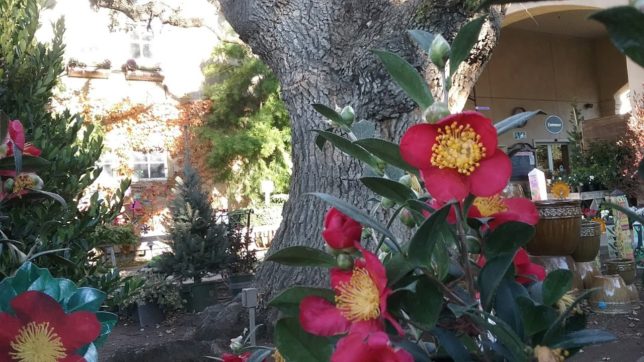
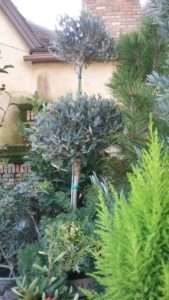
![vertcitrus[1]](https://www.aldenlane.com/m/wp-content/uploads/2015/11/vertcitrus1.jpg)

![pixdguava[1]](https://www.aldenlane.com/m/wp-content/uploads/2015/09/pixdguava1.jpg)
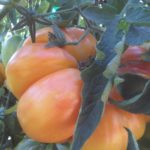 Even vegetables can liven a landscape with unexpected displays of unusual colors
Even vegetables can liven a landscape with unexpected displays of unusual colors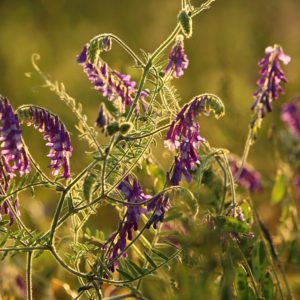
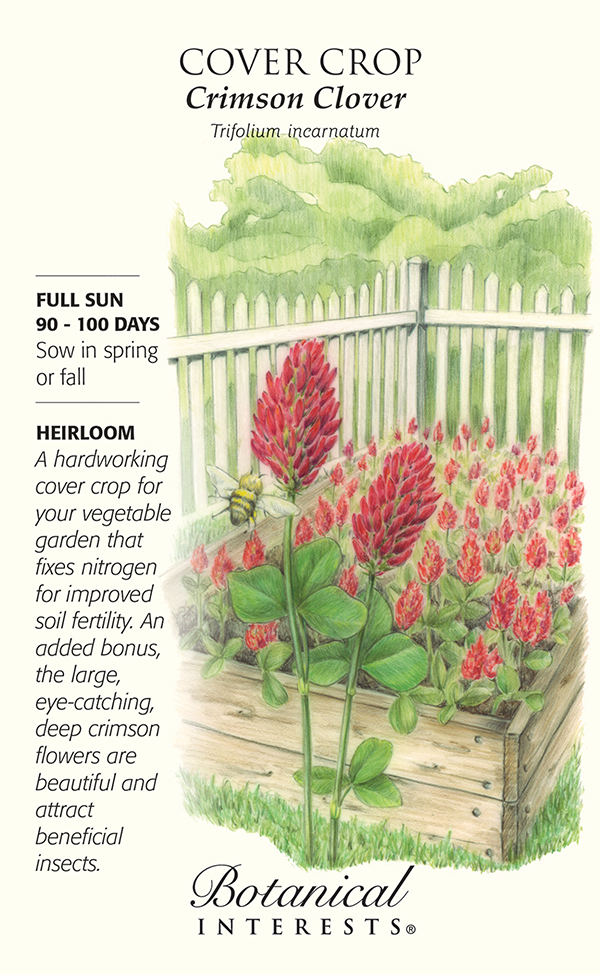

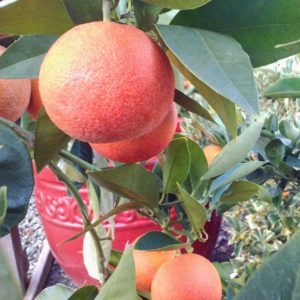 Citrus are among the most versatile of the trees and shrubs that grow in our Valley. They can be trained as a single specimen, in hedges, as a trellised espalier or in containers. Citrus plants offer beautiful evergreen foliage, fragrant flowers and delicious decorative fruit. Fall, with its milder temperatures, is a perfect time to plant citrus. Establishing a citrus plant before frost can help it weather the winter.
Citrus are among the most versatile of the trees and shrubs that grow in our Valley. They can be trained as a single specimen, in hedges, as a trellised espalier or in containers. Citrus plants offer beautiful evergreen foliage, fragrant flowers and delicious decorative fruit. Fall, with its milder temperatures, is a perfect time to plant citrus. Establishing a citrus plant before frost can help it weather the winter.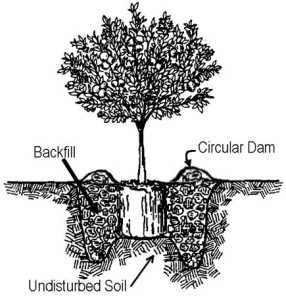 Water the plant thoroughly in the pot before planting and then again after you have finished planting it. Let the water soak in, and then water a third time. Citrus plants need less frequent watering than most garden plants once established. Give it a deep soak once or, at most twice week once established. Frequent watering is the most common cause of failure with citrus. Of course, if the weather is excessively hot, check daily and water as needed.
Water the plant thoroughly in the pot before planting and then again after you have finished planting it. Let the water soak in, and then water a third time. Citrus plants need less frequent watering than most garden plants once established. Give it a deep soak once or, at most twice week once established. Frequent watering is the most common cause of failure with citrus. Of course, if the weather is excessively hot, check daily and water as needed.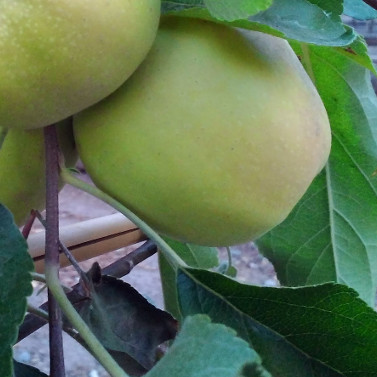 Have fun with fruit trees in your front or back yard. You don’t need acres of ground to experience the taste of freshly picked fruit. With today’s dwarf & semi-dwarf rootstocks, everyone can grow at least one fruit tree no matter how small your yard. Consider planting a fruit tree or two in your front yard.
Have fun with fruit trees in your front or back yard. You don’t need acres of ground to experience the taste of freshly picked fruit. With today’s dwarf & semi-dwarf rootstocks, everyone can grow at least one fruit tree no matter how small your yard. Consider planting a fruit tree or two in your front yard.![obj6014geo3317pg352p7[1]](https://www.aldenlane.com/m/wp-content/uploads/2015/07/obj6014geo3317pg352p71.jpg)
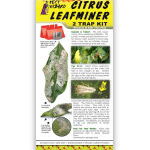
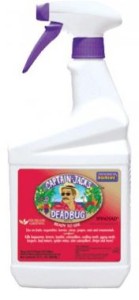





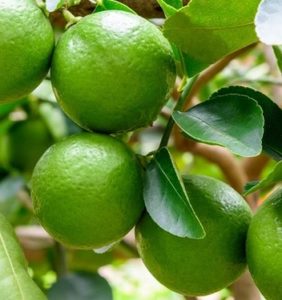
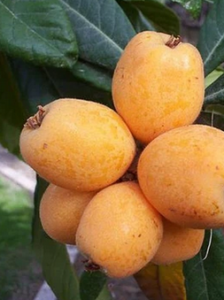
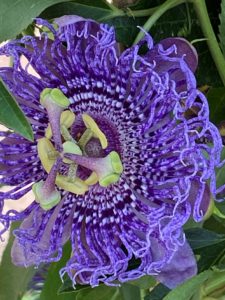
![peachaln[1]](https://www.aldenlane.com/m/wp-content/uploads/2015/07/peachaln1-150x150.jpg)
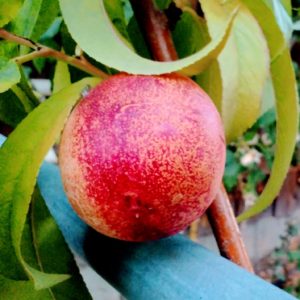 Check with us at Alden Lane for the right varieties for your home orchard. We’re all about home orchard culture that is different from commercial ventures. It’s about having fruit in the garden throughout the summer and fall seasons because you’ve planted varieties that produce one right after the other. It’s about taking advantage of the space you can plant espaliers, four trees in one hole, hedgerows or whatever it takes to bring you the rewards of the best experience you’ve ever had plucking an apricot from your own tree and melting into the sweet taste.
Check with us at Alden Lane for the right varieties for your home orchard. We’re all about home orchard culture that is different from commercial ventures. It’s about having fruit in the garden throughout the summer and fall seasons because you’ve planted varieties that produce one right after the other. It’s about taking advantage of the space you can plant espaliers, four trees in one hole, hedgerows or whatever it takes to bring you the rewards of the best experience you’ve ever had plucking an apricot from your own tree and melting into the sweet taste. 